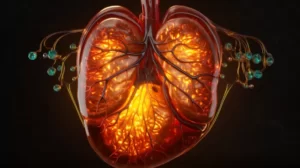There are many reasons we become diseased, get ill, or just plain don’t feel well. Some of them are beyond our control, like pollution and toxic chemicals served in foods we don’t personally prepare for ourselves — not to mention genetics and viruses. But quite a few things we can eliminate are compromising our health one day at a time. As it turns out, health-depleting toxins come in many shapes, sizes, colors, and designs. Yes, they are in the clothes you wear every day.
Natural Fabrics
Natural fabrics include the varieties that are organic, made of natural materials like cotton, silk, linen, cashmere, wool, and hemp. These types of fabrics allow your skin to breathe, hold moisture away from your skin, and, yes, require some special cleaning instructions and/or ironing before wear.
Synthetic Offspring
Synthetic fabrics are the offspring not of nature but of science and technology. They are made with special materials that, depending on the fiber, can stretch as your body swells (from toxins?), hug your hips, never wrinkle and always stay dry (by forcing your skin to absorb the toxic moisture). And if the clothes you are wearing — especially undergarments — make you itchy or leave red marks on your body, the toxins are being pressed into your skin all day. No wonder your ribs are red and sore.
Synthetic fabrics are made from chemicals like petroleum, various pesticides, perfluorochemicals, antimony, and cadmium. They include polyester, Spandex, rayon, acrylic, nylon, acetate, and triacetate. And any fabric or clothing that claims to be static-resistant, permanent press, or wrinkle-free, or that requires no ironing, is made from a non-natural chemical substance that is potentially putting you at risk.
Wrinkle-Free Fabrics
Please stay away from wrinkle-free or no-iron fabrics. They are exposing you to toxins called perfluorochemicals, or PFCs. These are the same chemicals used on many Teflon-coated or non-stick pans. The problem is that these chemicals are not natural; therefore, the human body is not designed to metabolize them. Therefore, PFCs accumulate in your blood cells. PFCs have been linked to reproductive and developmental toxicity and also to both liver and bladder cancer.
The worst aspect of this problem is that PFCs are more flammable than natural fibers. As a result, more flame-retardant chemicals called halogenated flame retardants (HFRs) are used to make the fabric “safe” for public wear. I’m sorry, but my idea of “safe” is also linked to a basic concept of “healthy” — which means not including toxic chemicals like HFRs that have been linked to thyroid issues, reproductive and neurodevelopmental problems, immune suppression, and even cancer.
Toxic Shades
But fabrics are only part of the problem. Their colors are toxic, too. In the olden days, fabric color dyes were made from plants, minerals, and animal sources. You know: natural stuff. These days, they are made from synthetic chemicals, heavy metals, cadmium, cobalt, and antimony. They are toxic; you don’t want them on your skin (your largest organ) all day, every day, for your entire life. Look for clothing and fabric labels that say organic dyes or natural dyes.
If we are talking about toxins that enter the body through the skin, then you can see how these toxins can be avoided. In other words, there is an entire set of illness-causing and disease-causing toxic substances that can be removed from your life by your own choice. Clothing is a great place to start. You should also eliminate toxic bed sheets, blankets, bath towels, and upholstered furniture.
The Laundry Problem
What’s more, you need to be aware that the very laundry detergents you are using may also be toxic. If your detergent, fabric softeners, or dryer sheets are scented, chances are they leave residues of toxic chemicals on your clothes that are entering your body through your skin. Yes, in the olden days, soap and detergent scents were made from flowers, berries, roots, and barks. Today, the vast majority are made from petroleum. So if a product smells “mountain fresh” or like a “spring breeze,” it may cause disease. From your clothing to your skin and through to your cells, these chemicals travel in your body and cause rashes, pain, illness, and eventual disease.
You may not be able to avoid toxic fabrics or chemical cleaners everywhere you go, but you can make a choice to change the fabrics of the clothes you wear, the towels you use, and the detergents you clean with. These are things you can control to help reduce your risk of the symptoms of chronic ill-health and disease. The habit of merely thinking of clothes in terms of how they look and feel needs to be replaced with a focus on their health effects. Only after you read a clothing label and see that a potential purchase is made of natural fibers should you look for the best fitting and most trendy clothing. Don’t forget to wash all clothes in hypoallergenic, scent-free detergent, and you’ll have the best of fashion and health.



![8 Simple Rules to Refresh Your Body with a Healthy Cleanse [See Pictures]](https://naturalhealthreserve.com/wp-content/uploads/2024/01/8-rules-healthy-cleanse-slideshow-300x168.webp)